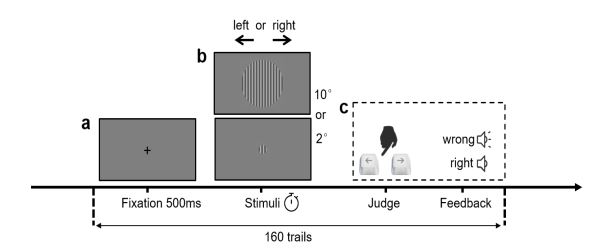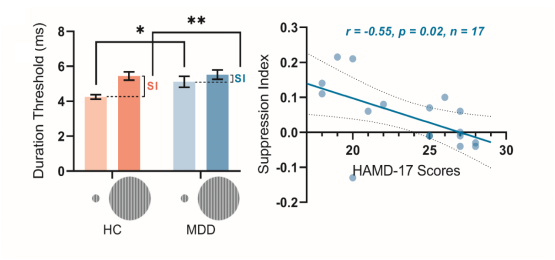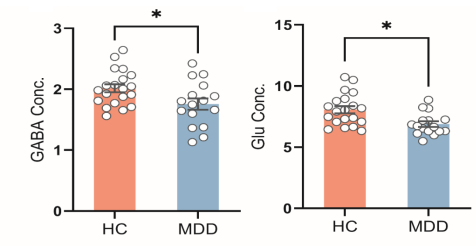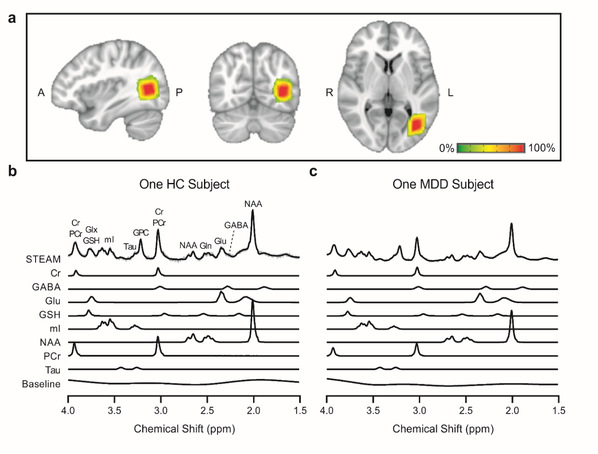Scientists reveal blurry perception and the brain’s molecular mechanism in major depressive disorder
Depression is commonly associated with cognitive deficits in memory and emotions like sadness. This association alone, however, neglects the intense difference in how subjects perceive others and the world in this mental state. Depressed subjects often perceive their environment in an unsharp and blurry way. That, in turn, affects our emotion, cognition and behavior since we act and think according to the way we perceive. The research teams of SONG Xuemei at the Zhejiang University School of Medicine, TAN Zhonglin at the Zhejiang University Affiliated Mental Health Center & Hangzhou Seventh People’s Hospital, and Georg Northoff at the University of Ottawa published an article titled “Reduction of higher-order occipital GABA and impaired visual perception in acute major depressive disorder” online on April 16th in Molecular Psychiatry. This research sheds a novel light on depressed subjects’ perception and its biochemical origins.
Perceiving a “blurry world” in depression
Using a specific test for visual perception (Figure 1), Song et al. (2021) investigated subjects suffering from major depressive disorder (MDD). The task required subjects to determine the direction of a moving stimulus. Depressed subjects incorrectly judged the direction of the small, moving stimulus and took much longer to react to it. Clearly, depressed subjects have an impaired ability to follow and distinguish visual motion of external stimuli. Furthermore, a measure which quantified the subjects’ ability to detect visual differences between small and large stimuli, the suppression index, became weaker (Figure 1). Therefore, depressed subjects may be too slow internally to follow external motion – this means that they perceive these stimuli and their environment in generally less sharp and increasingly blurry manner. This strongly impacts their mood and cognition. As this study shows, the greater their inability is to follow external visual motion, the more severe their depressive symptoms are (as measured with the Hamilton Depression Scale (HAMD-17)).


Figure 1 Visual perception task (upper) and the results (below)
Exploring the source of blurriness - revealing the brain’s molecular mechanism
Where does such increased perceptual blurriness of visual motion come from? The researchers also investigated biochemical metabolites of the brain’s excitation and inhibition in the exact region known to mediate visual motion, that is, a higher-order region of the brain’s visual system, the medial temporal complex area (hMT+). Interestingly, depressed subjects showed lower concentrations of biochemicals like GABA and glutamate (Figure 2) which are known to mediate excitation and inhibition. This impairs the depressed subjects’ capacity to properly perceive and follow external visual motions because their brain does not yield sufficient and fast enough activity to follow external visual motion.
It is worth mentioning that the ultra-high 7T human MR scanner played an important role in this research. Using the advanced 7T proton Magnetic Resonance Spectroscopy (1H-MRS) technology, the researchers can directly measure the absolute concentrations of GABA and Glutamate in hMT+ area without specific ingredients like MRI contrast agents. (Figure 3).

Figure 2 Lower concentrations of GABA and Glutamate in subjects suffering from MDD

Figure 3 Measuring the absolute concentrations of GABA and Glutamate
in hMT+ area with the technology of 7T-1H MRS
Take-home message – perception leads the way to biomarkers and therapy
What is the take-home lesson? Depressed subjects suffer from increased blurriness in their perception which is related to the brain’s biochemical concentration. How would you feel if you cannot properly follow a movie’s sequences? You withdraw from the movie and ultimately also socially such that eventually you feel depressed.
“Our findings indicate that is exactly what happens in subjects with depression,” said SONG Xuemei. “Furthermore, our research is expected to open new therapeutic options. If we can normalize the brain’s biochemical levels that mediate excitation and inhibition – glutamate and GABA, respectively, we may improve their visual perception. That perceptual improvement, in turn, will, we are sure, decrease their social withdrawal and, ultimately, improve their emotion and cognition.”
Source: Zhejiang University School of Medicine